How to solve the problem of LED heat dissipation in car headlights?
Release date: 2017-08-17 Source: CNLED network
For a long time, LED heat dissipation has been plaguing the entire lighting industry, and in the face of a high-growth headlight market, it is unwilling to miss it. Next, we will jointly discuss how to overcome the heat dissipation problem in the small space of the headlights of the car, and then reach the ambient temperature of 50 °C of the lamp, the maximum junction temperature should not exceed 80 °C.
At present, the power of the low beam and the high beam of the car are concentrated between 40 and 60W, while the power of the high-end car will reach 80W or more, plus the width and direction lights, etc., under ultra high power. If the heat energy generated is not easy to exceed 80 °C, then solving the heat dissipation problem will be a difficult problem for engineers in design.
Heat and space are inseparable. Under the condition of large space, the cheapest cooling solution can be selected. For example, street lamps can solve the heat dissipation problem easily by increasing the heat dissipation aluminum seat. However, if the mobile phone is enlarged, no one may want it. If it is not solved, it will take a hot potato, so the artificial graphite heat sink will be used. The heat dispersion forms a heat source around the temperature equalization.
After we understand the concept of space, we will understand the heat source and the required upper limit temperature. The heat source transmits the temperature to the surface through solid heat conduction and then to the gas. The gas convection is slow and passive, so it is especially important to solve the overall package material and heat source.
Everyone knows that LED chips are converted from light energy into light energy. The efficiency is generally only about 30%, and the remaining 70% becomes heat energy. If the heat energy is not released in time, it will lead to a decrease in light efficiency. As shown in Figure 1, the CSP structure used in the headlights of the car has a relationship in this structure. The first is how much wattage generates heat; the second is the thermal conductivity of the upper and lower materials, which affects the overall temperature uniformity; The third is the thickness of these materials. Table 1 shows the thermal conductivity of various materials. With these concepts, the heat dissipation problem can be solved.
  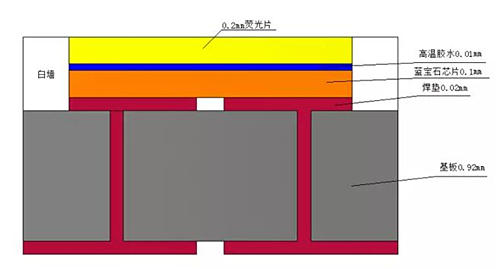
Figure 1 CSP structural material thickness
 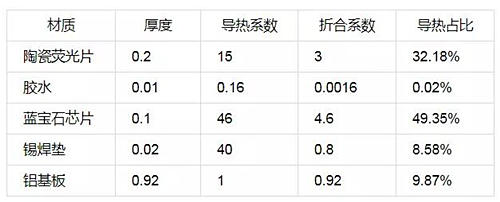  
 
Table 1 Thermal conductivity ratio of packaging materials
Although the car headlights are large enough, there is not much room for heat dissipation, and in the pursuit of brightness, more and more car manufacturers use high-power and multi-number LEDs. The front of the lamp bead is reserved for light and mirrors, so that it can be used for heat dissipation. The simplest and most effective way to dissipate heat is to install a fan and a heat pipe. However, each additional component has a risk of failure and cost. Therefore, the temperature of the LED package has become the direction of efforts of various manufacturers.
Homogenization is the most important issue in small area heat dissipation, and how the junction temperature is conducted in the shortest time. Figure 3 shows the relationship between junction temperature and lifetime.

Figure 2 Relationship between junction temperature and lifetime
How does the junction temperature not exceed the customer's specifications? The following is the thermal structure analysis of the LED package with different drive currents (Figure 4). When the current is 150mA, the temperature difference between the two is not large. The glass is 2.5°C lower, but when the current reaches 800mA, the gap is widened to 20.1°C.
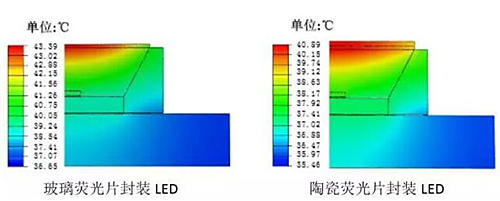
Figure 3 Two LED package temperature distributions when the drive current is 150mA
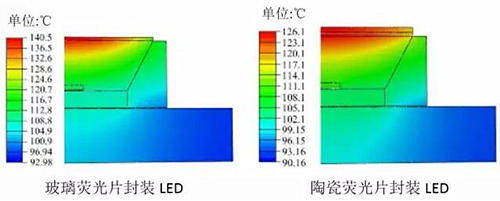
Figure 4 Drive current 800mA two LED package temperature distribution
It is inferred that the ratio of thermal conductivity is an important method for analyzing the heat dissipation of LEDs. Under small current driving, the temperature does not constitute quenching and aging of LED lamps . However, the temperature influence is very high at high currents. Therefore, good packaging materials are the most direct and effective way to achieve high quality LED lights.
Comparing the materials in the encapsulation layer structure, it is found that the chip and the fluorescent layer material have the highest proportion of heat dissipation, and the cost of changing the influence of the chip is too large, and the material of the fluorescent layer is relatively more cost-effective. Table 2 is a comparative analysis of the fluorescent layer materials.
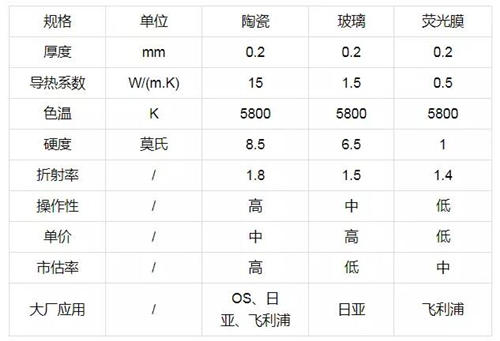
Table 2 Comparison of fluorescent layer materials
The general manufacturer of car headlights only considers the quality of the chip. It is not only one of the packaging materials, but the foreign manufacturers have already worked hard on the basic materials. The quality of a lamp is inseparable from the heat dissipation, and the key to heat dissipation. The key point is the material and the proportion.
Tags: car headlights, LED lights, LED chips, street lights, car headlights
Easy Electronic Technology Co.,Ltd , https://www.yxpcelectronicgroups.com



